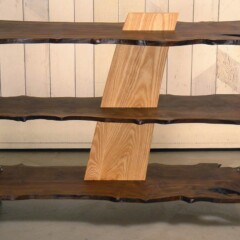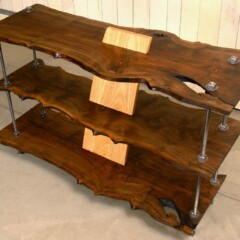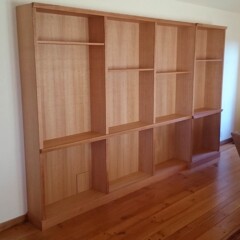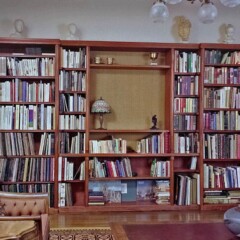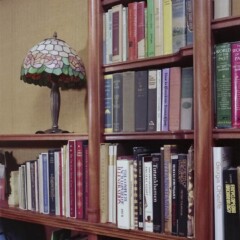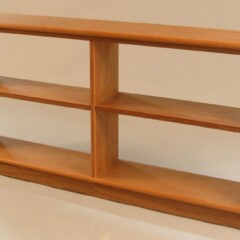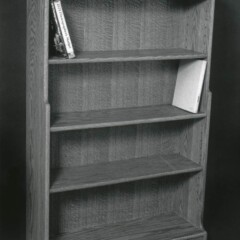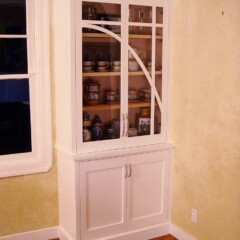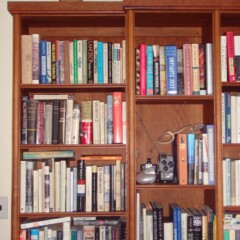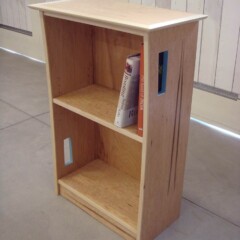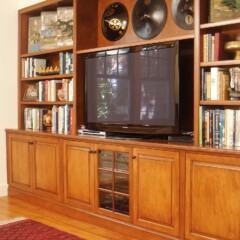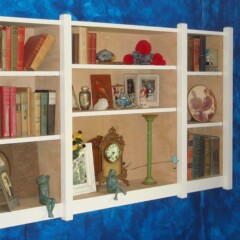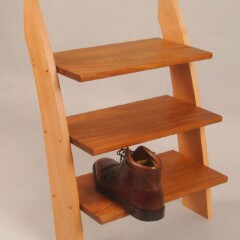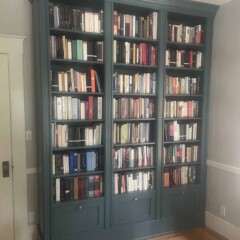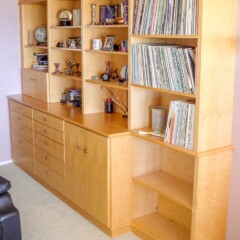I have learned to resist the urge to add design features to projects simply to make them seem less plain, because it often turns out that the functional plan provides considerable visual interest, which is only obscured by edge details or the like. This does not apply to the judicious use of glass shelves and lighting, which support the display function of the shelf system.
However, the Brooklyn bookcase (named after a neighborhood in Oakland, not a borough in NYC) is an interesting counterexample. The piece is not built in but was designed to fit a long wall closely and to complement the existing moldings and stylistic feel of this Victorian house. This project is over twenty years old and still feels like a great success.
SHELVING GALLERY
click photos to view larger versions

